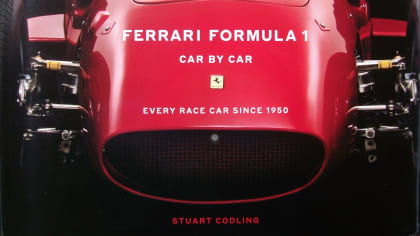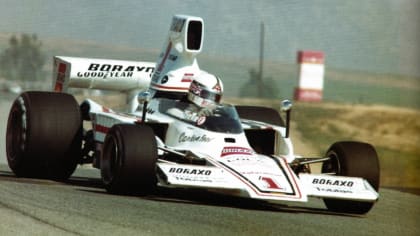Ed Swart - From Zandvoort to Daytona

60 Years of cars, characters, and the world’s most challenging race tracks.
An autobiography gives a glimpse into Ed Swart's life of racing - and our reviewing contributor relays personal anecdotes.
By Hector Cademartori
Fri, Feb 11, 2022 12:34 PM PST
ED SWART - From Zandvoort to Daytona
60 Years of cars, characters and the world’s most challenging race tracks.
Published by: Coterie Press Ltd.
Book Author(s): Ed Swart with Johnnie Tipler
192 Pages
ISBN: 978-1-902351-71-1
Price: $49.95
Featured Photo: The book reviewer’s favorite photo: Ed, four wheels in the air, in his Abarth 2000SP during the 1970 Nurburgring 500 Kms race.
A few months ago I visited author Ed Swart and his wife at their Southern California home and had the privilege of seeing the files of this book before it went to press. After we took a look at the “galleys” (as we used to call them before the digital takeover) in Ed’s office, he showed me a bookcase with several folders. I didn’t count them but there were at least 20, maybe more. Ed took a couple out and showed me the contents: he had archived all the results, notes, magazine clips, credentials, and miscellaneous materials from - get this dear reader - almost every race he had entered since the first one 60 years ago.
It was as if he was preparing to write this book almost since the beginning of his life.

Perhaps I should’ve detected this fact when I came upon a photo of a child, about 10 years old, smiling, sitting in the driver’s seat of a Gatso sports car in Zandvoort or those in the paddock with his parents with racing stars of the day like Giuseppe Farina, Maurice Trintignant, or Jean Behra.
Autobiographical works deal with the life of the author, but in this case he expands his descriptions to the world of motorsports that he touched and that touched him giving the his story a unique ”journalistic” style. Here, we learn about the politics of racing, the technical aspects of the cars he drove and the cars he competed against, stories about people (such as Carlo Abarth), the different series, the lifestyle of the times (specially the early years), and the circuits. From Zandvoort to Daytona (as the subtitle of the book proclaims), each is shown in dedicated sidebars with a map, track length, the corners, lap record and a very special “a lap with Ed Swart”.
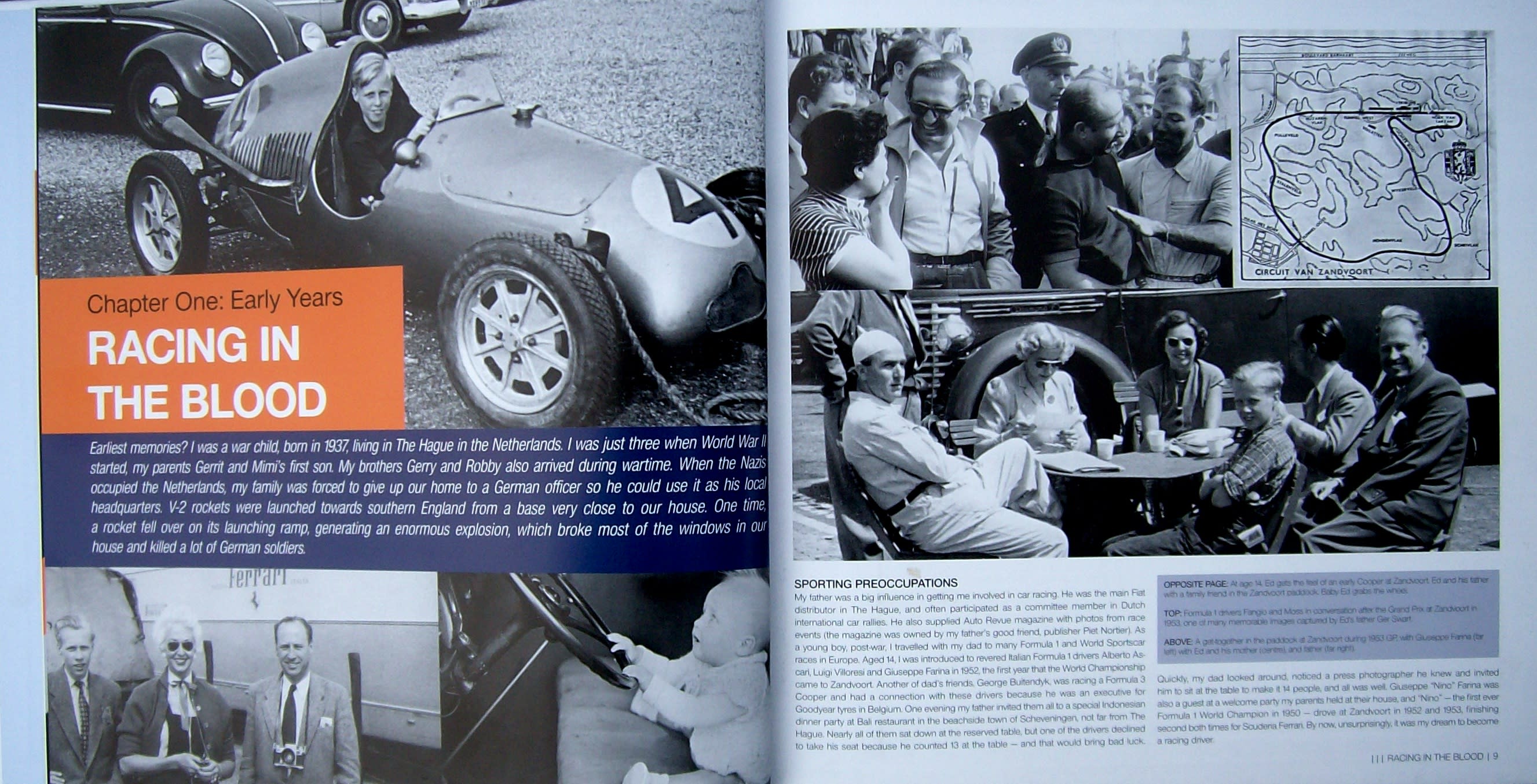
The book covers his beginnings with Fiat and Abarth (his father was a Fiat distributor in the Hague) racing the little 850 rocket ships of Scuderia Auto Swart (SAS), with interesting side notes such as his sponsorships by Radio Veronica (a pirate radio station that broadcast from a ship off the coast of Holland) and Team Canon. Further chapters cover the Abarth Sport Prototypes,the FIA 2 Lt. seasons and also the Springbock Series in South Africa, along with the Tasman Cup in Australia and New Zealand as well as the Temporada races in Argentina.
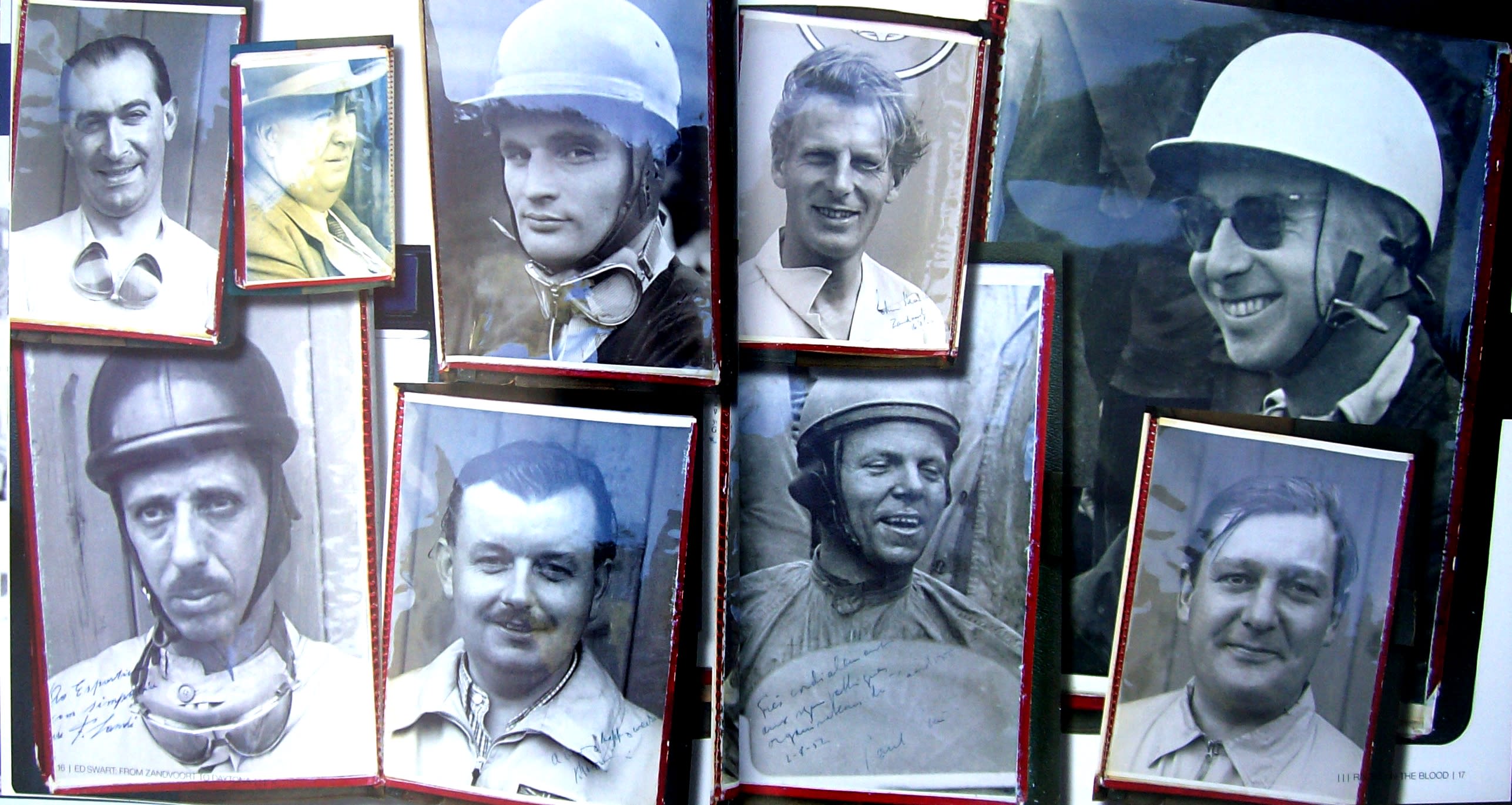
Ed was at the leading edge of professional racing and among the top privateers being this evident by the company he kept during the early ‘70s in the FIA 2 Liter sport Prototype series, first with Abarth and then with Chevron competing against the likes of Arturo Merzario, Jo Bonnier, Brian Redman (who wrote the book’s Foreword), Dieter Quester, Toine Hazemans, Kurt Ahrens, Vic Elford, Hans Herrmann, Jackie Ickx, Jody Scheckter and many more.
There’s also a section devoted to his marriage to Sally Stokes.
Ed was the driver but Sally, who herself is a card-carrying member of the racing community, has been his trusty co-pilot and has a well deserved section in the book titled “A Racing Romance”, a charming love story that we covered when they celebrated their 50th wedding anniversary.
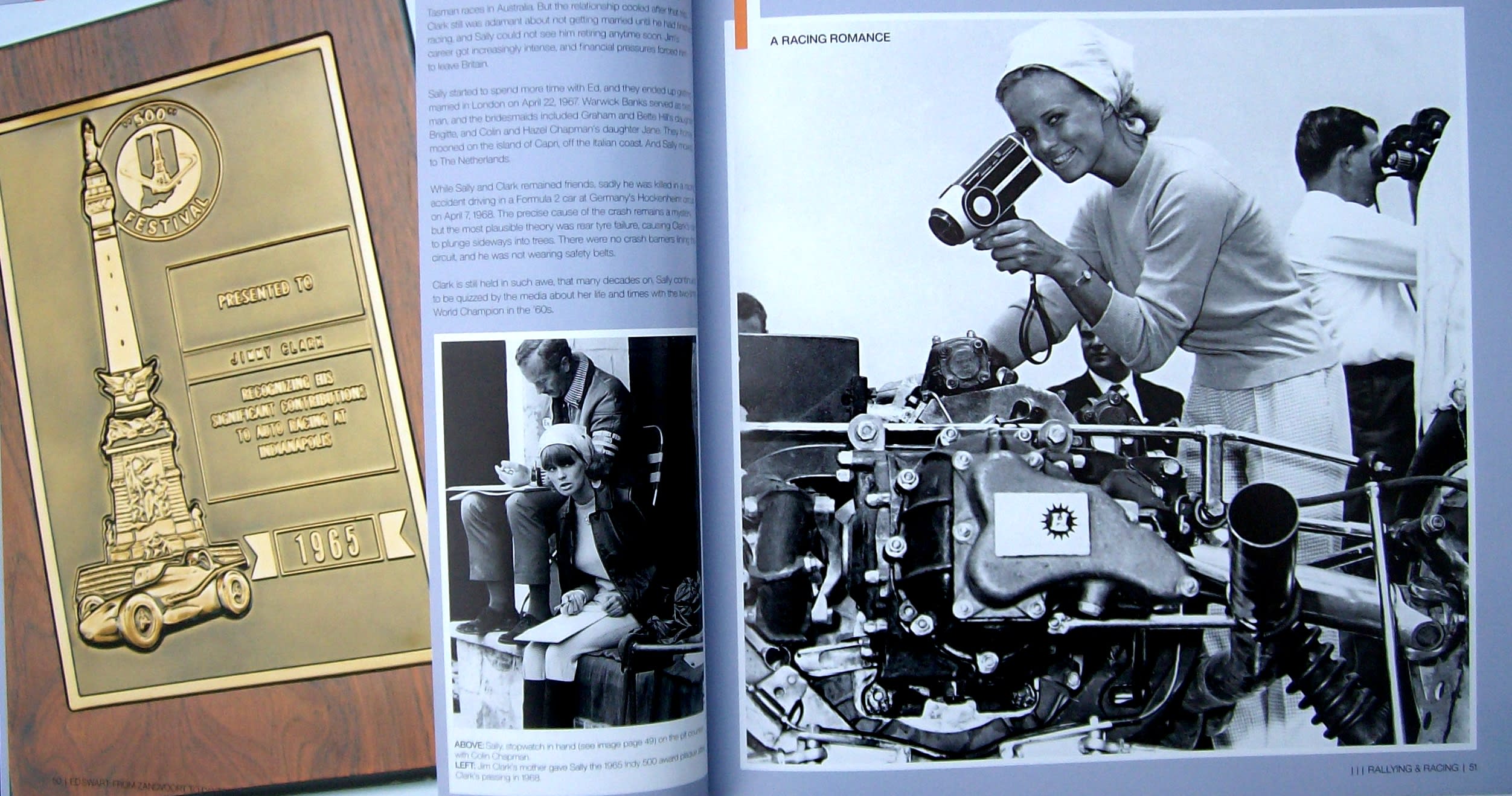
In 1972, at the age of 35, Swart decided to stop racing and concentrate in his family business. However, that didn’t mean he would leave the racing world. The Dutch Royal Automobile Club (KNAC) asked him to be the Clerk of the Course (Race Director in the US) for the Dutch Formula One Grand Prix, a position he held from 1972 to 198, and started racing classic cars.
In the early ‘80s, he and Sally moved to the US to start two new business, a new life, and continue racing in historic events. Swart’s distinctive white and orange helmet and his two personal Chevron rides, the F2 and the 2 Lt. Sport Prototype, became iconic in vintage events. Eventually he also drove other people’s cars; F5000, F1, prototypes and Can-Am.

Starting in1999 he founded a new vintage racing club, HSR-West, and that meant a daunting list of new tasks that started just after the early drivers’ meeting when he would suit up and drive his Chevrons (and then come back and make sure that the cones have been restored after some hot jockey eliminated the obvious nuisance known as a “chicane”), organize the Friday wine-and-cheese get together, the dinner on Saturday, listen to every complaint from everybody and his/her mother, suit up again, drive and, at the end of the event … make sure that everyone got paid before leaving the track. I was a witness to all that.
In 2012 he sold HSR-West to Tony Parella, a steam roller promoter that has been building a nationwide racing empire acquiring some other vintage clubs and series (such as Trans-Am) around the country and operating under the SVRA (Sport Vintage Racing Association) banner.
Ed officially retired from racing at the VARA Lucas Oil Big Bore Bash at Willow Springs on November 6th, 202, the day of his 84th birthday, that special day was celebrated with a small but charismatic party after the last race of the weekend at his garage.
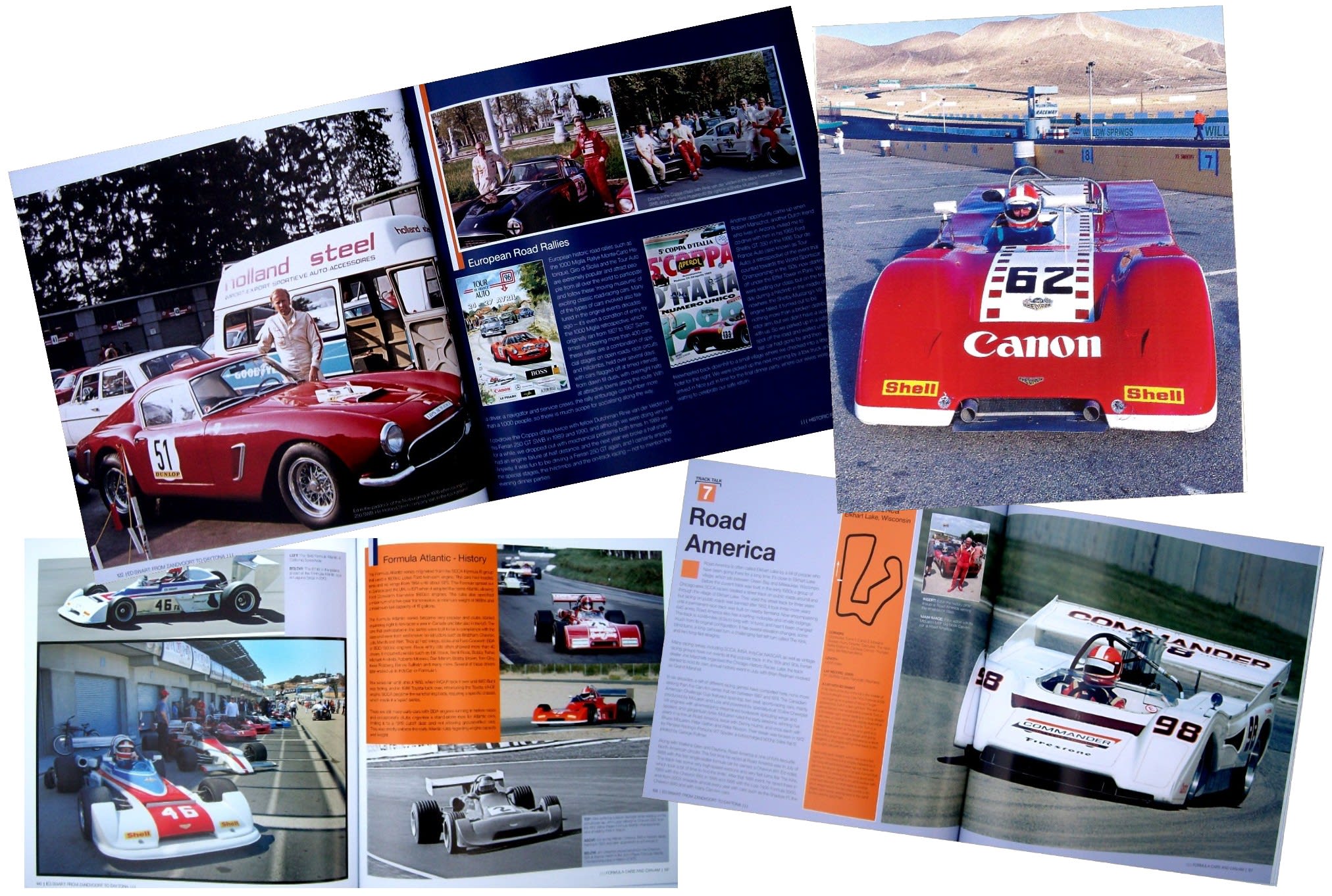
The photography in this book (over 300 shots in all) is spectacular with images of some of the lesser known small bore series of the European Touring Car Championships showing swarms of rabid Fiats 850 Abarths fighting for position, along with action scenes at the Nurburgring, at the old banked section of Monza and panoramic shots showing the ambiance at Brands Hatch, Nurburgring, Hockenheim and the Autodromo de Buenos Aires for the 1000 Kms. My favorite shot in this book is one of Ed flying over a hill at the Nurburgring during the 1970 500 Kms; with all four wheels in the air of his Abarth 2000SP which, for my money, was the best looking car in the series at the time.
Swart has included great photos that his father, Ger Swart, an amateur but accomplished photographer, took at racing events. Action shots and wonderful portraits of drivers such as Farina, Hawthorn, Taruffi, Frere, Landi, Villoresi and many others.
In brief, what we’re looking at here is a multi-faceted book that reflects the multi-faceted life of its author.
My compliments to Ms. Violet Cruz, credited by Coterie Press as the Designer of the book. Cruz tastefully decorated with vignettes of period posters, credentials, trophies, advertisements, and magazine covers which carry the feeling throughout the pages. The balance between vintage materials and modern graphics and the use of entire pages dedicated to great photos and many small details (like lapel pins and classic pit passes) make for a very attractive package that tells of a fascinating life in motorsports.
About The Author
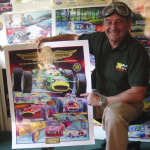
Hector Cademartori honed his racing art in Buenos Aires. In 1983, he left his job with Corsa Magazine in Argentina and moved to Southern California to specialize in motor racing art. Today, you can find Hector’s art on Indianapolis 500 Yearbook covers, Laguna Seca Raceway, Auto Club Speedway and Carrera Panamericana posters, the NHRA, foreign and domestic automobile and motorcycle magazines, motorcycle manufacturers, Toyota Motorsports, TRD and Lucas Oil. Hector races his 1973 Datsun 240Z “Ferratsun” around the So Cal circuits, and a 1991 Volvo 740 Wagon with the 24 Hours of LeMons.


